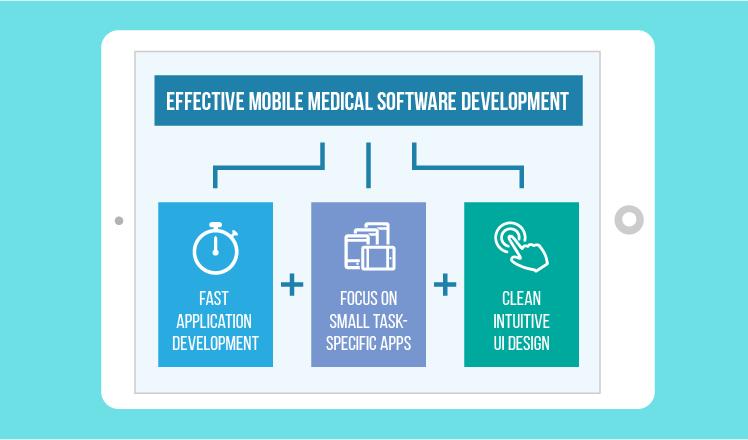Medical software development. How apps turn from life-saving to time-tying
To reach Stage 7 of EMR Adoption Model (EMRAM) and Ambulatory EMRAM, health organizations are considered to create clinical environments without paper charts. According to HIMSS Analytics, only 4.1% (for EMRAM) and 7.79% (for Ambulatory EMRAM) of US care systems have achieved this by the end of 2015.
Healthcare IT News reports “80% of the 571 physicians surveyed felt EHRs impede patient care and almost half say patient safety is at risk.” “The costly, clunky systems the government demands are worsening the problems and even driving some software experts back to paper,” says AAPS (Association of American Physicians and Surgeons) Executive Director Jane M. Orient, MD.
Organization and continuous improvement of medical records management to achieve better care are troublesome without physicians and nurses going mobile. With a proper approach to healthcare mobile app development, caregivers invest into optimization of routine processes as well as improvement of data flow and overall performance. However, the inherent problem with the majority of clinical mobile apps is that they are built around EMR/EHR systems, not health specialists’ needs.
Web-to-mobile bumpy road
Approach problems
Mobile apps can be useless for handling routine tasks of clinical staff when IT experts apply the system-centric approach to medical software development. This attitude means creating a mobile app that fully inherits the functionality of the desktop and web application.
At first, it might seem like a good idea, but ‘mobilizing’ a desktop EHR application is likely to compromise user experience because of inconvenient navigation and thus low productivity. Instead of helping physicians and nurses complete their assignments faster and more efficiently, the ‘replicate’ will do the opposite.
Functionality gaps
A one-size-fits-all solution is a tempting yet surreal idea. From department to department, doctors will use at best 30% of the app’s features. Physicians will have to waste their time wandering through the app to find the needed functionality.
Apart from meeting the requirements at the departmental level, you will probably want to accommodate the needs of nurses, surgeons and physicians within each department, too. All this makes developers create an impractical monolith. But there is another way.
So, how does a helpful mobile medical software look like?

According to Gartner, developers should rethink the way they create applications by turning on the mobile mindset: “Mobile strategists must use tools and techniques that match the increase in mobile app needs within their organizations”.
Gartner believes developers need to replace the traditional large-screen approach with a bimodal strategic path that supports innovation and agility to deliver apps more efficiently and quickly. This way, back-end software engineers will create stable infrastructures and APIs to retrieve and deliver data to back-end systems without affecting web applications. At the same time, front-end developers will use high-productivity, agile approaches to deliver user interface rapidly.
It is, indeed, easier to stay with the system-centric approach, creating mobile copies of desktop solutions. But it is also an investment into improper software that will slow down the healing process instead of boosting doctors’ performance, as users will end up tapping small screens and trying to find the right menu item.
Now, here is what the user-centric approach has to offer:
- Creating mobile applications quickly. It is technically possible and does not compromise data integrity or the systematic approach. And it may bring what technology often fails to deliver – a growing efficiency and CONVENIENCE.
- Developing small apps. Each app should contain features tuned to cover a specific role within a particular department (however, we do not suggest creating a thousand single-feature micro apps, as one may think).
- Optimizing navigation and UI. Excellent usability comes first, so let’s stick to intuitive design. As health specialists need mobile medical software to perform better, they will appreciate a clean interface and smooth navigation.
On the way to a life-saving software
Overall, we don’t want to create a false impression that the system-centric application approach to mobile development is catastrophic. Many industries keep calm and continue using mobile copies of web software, but if we want to make a change in healthcare, achieve Meaningful Use and improve outcomes, we need to build small and effective apps tailored to specific clinical tasks.

